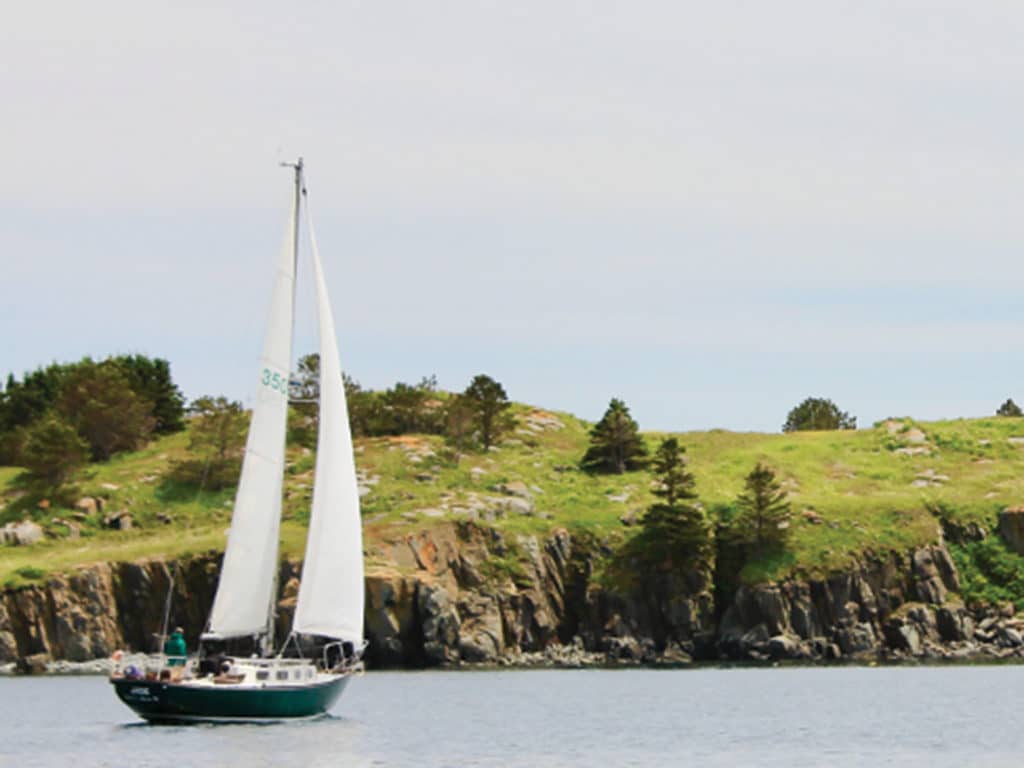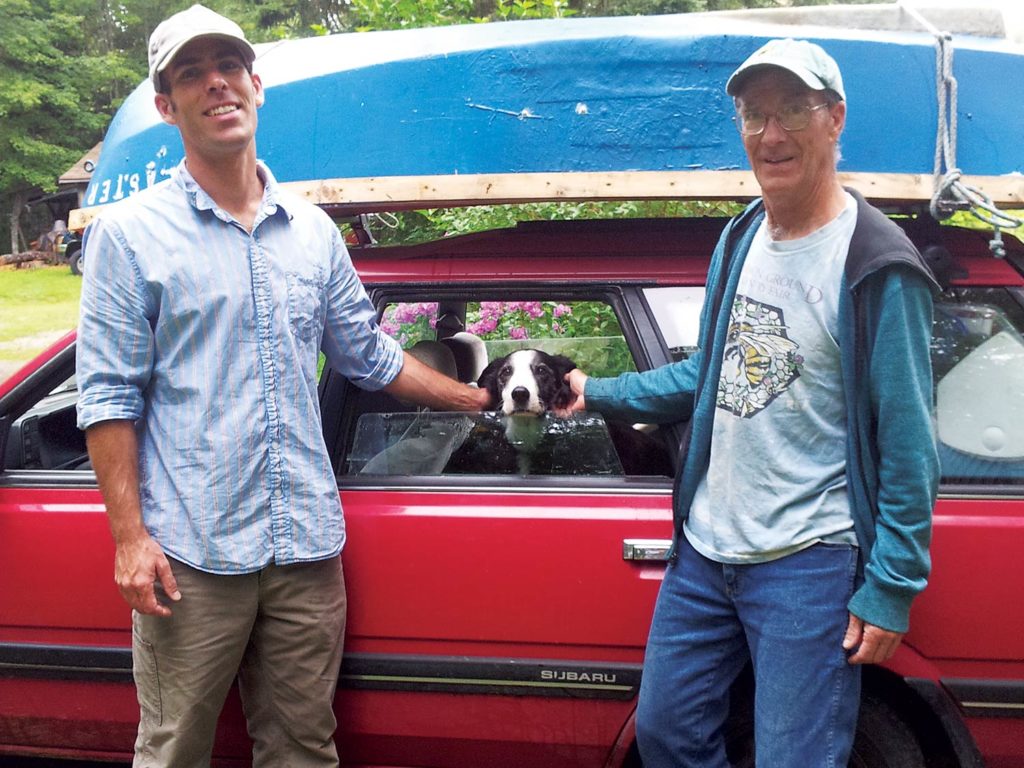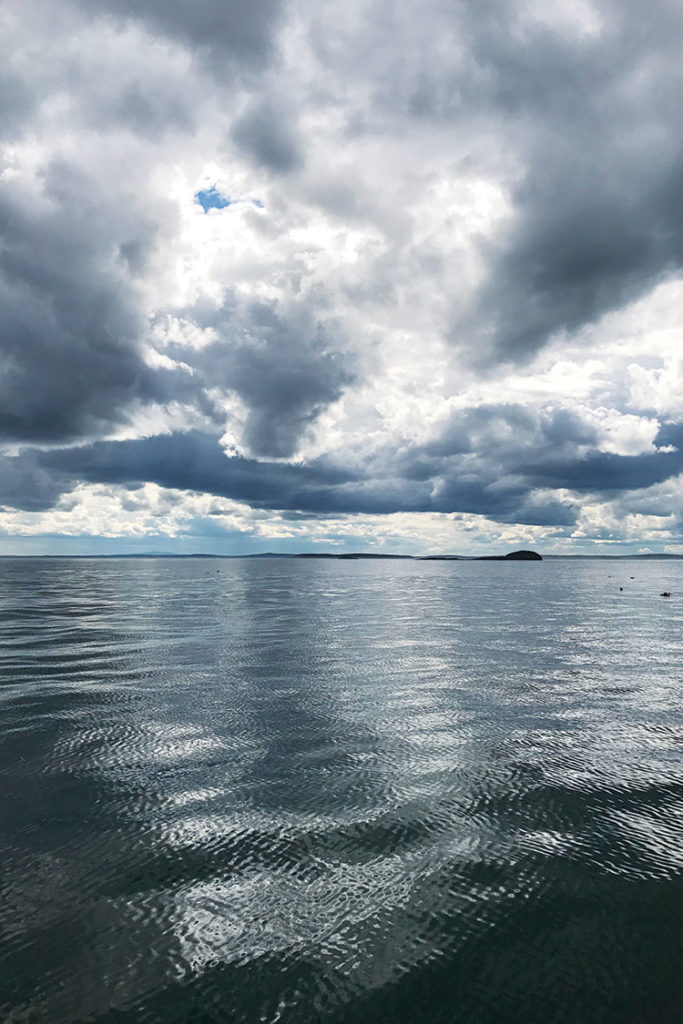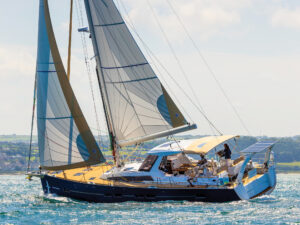
I needed a place to live. I’d been in a cabin on a rural peninsula in Maine for 6 years, but it was time to go. The cabin was owned by an octogenarian who, years earlier, had been the mistress of a wealthy sailor. She and her lover had sailed around the world together, and while anchored one evening in the late 1970s, they noticed a piece of property with a battered “For Sale” sign on a tree.
They bought the property. It was a 15-acre hillside overlooking the harbor to the west, open ocean to the south and Acadia National Park in the distance. They retired from full-time cruising, and they lived aboard while building the cabin. They spent years together there, hosting parties and welcoming what cruisers found their way into the isolated harbor.
The sailor eventually died of cancer, and the mistress stayed on at the cabin until she grew too old to live there. She bought a town house, and the cabin sat empty until I moved in, eight years later. I stayed as caretaker and resident author; she was a lover of books, and we became good friends, and we’d drink wine and eat crackers, talk about books and boats and life aboard.
Slowly, I was deciding that when I moved out of the cabin, I was going to move onto a boat.
She died six years later, and her son quickly sold the place. True to my decision, if a bit late, I began looking at boats. I didn’t have much time to find one, and although I’d done a fair amount of boat-repair work and had worked aboard a lobster boat, I knew next to nothing about sailing.
My price range was around the ten-grand mark. Finally, I found a Tartan 34c. She was in the water in Nahant, Massachusetts, across the bay from Boston, and the seller had recently dropped the price to $10,900. I drove down and looked at her.
When I boarded Jade for the first time, she was in rough shape, but not as bad as I’d expected. She was on the far side of the mooring field and was rocking in a relatively heavy swell. My 70-year-old mother had come along with me, and she was quickly verging on seasickness, so I didn’t look the boat over as closely as the others I’d looked at, and that’s probably why I bought her.
She was in the water, across the bay from Boston, and the seller had recently dropped the price to $10,900. She was in rough shape, but not as bad as I’d expected.
Two weeks later, I returned to the yacht club in Nahant in an antique Subaru with a derelict skiff strapped to the roof. I had with me a clam digger from Down East Maine called Pete and my 15-year-old border collie, Henry. I brought the clam digger because he knew how to sail — though he’d sworn off every boat larger than a canoe years ago — and I brought the dog because he kept having near-death episodes every time I left his sight for more than a few hours.
It was hot and muggy. The clammer hadn’t left his corner of Maine for years, and he wasn’t happy about driving on an interstate, or about me getting us lost in Lynn, or about having to lurk around the yacht club with an old dog on a leash.

The test sail went smooth enough, but the clammer was anxious and hungry and not sure about the boat or the boat’s owner. Once back in the harbor, I let the owner bring her in. We approached the float, and he leaned down to shift into reverse, but there was nothing: no forward, no reverse, only the engine chugging away as the boat slid through the water, seeming to actually gain momentum. The float was off the port side, but dead ahead loomed the big concrete wharf, just high enough for the hull to wedge beneath.
The clammer stood on the foredeck with a line. The boat zipped helplessly onward. I looked at the owner, who appeared shocked but somehow nonchalant. He could either hit the float, the wharf or the rocks to starboard. I saw the clammer hesitating, debating on whether or not to make the jump, which was too far to attempt — I envisioned his feet missing the dock, his torso catching at the ribs. I was about to yell “No!” when he leapt, line in hand, and made the dock with a single foot, toppled in a heap but managed a few fast wraps around the cleat.
My 70-year-old mother was with me, and verging on seasickness, so I didn’t look the boat over all that closely, which is probably why I bought her.
I was wet with sweat, not sure about any of it. The owner ducked down below and got the nut and bolt back onto the shift linkage and came up smiling. I followed him to his house, signed the biggest check I’d ever signed, and it wasn’t until well after dark that we were aboard my new boat, settling in for a night on a mooring, the lights of Boston glowing across the water.
I didn’t know this, but the clammer hadn’t sailed a monohull since he was a kid sailing dinghies 50 years earlier, nor had he sailed anything since the invention of GPS. We left Nahant at daylight on a broad reach with 15-knot winds. We were sailing what was not only my single largest investment, but what would also be my home — and it was slowly sinking in that I had no idea what I was doing.
Henry, the dog, was old and senile enough to be oblivious, and he was the first to fall into a routine, which basically consisted of eating. Although he’d spent plenty of time in a canoe, he’d never been to sea before; he’d led a cattle dog’s life in Montana. We spoiled him with sandwiches and potato chips, and other than the occasional tip-over, he quickly turned into a boat dog.

Somewhere off Cape Anne, the clammer began trusting the Tartan — and the GPS — and he relaxed, a bigger grin smeared across his face than I’d ever seen on him. We passed a couple of ocean sunfish, a few minke whales, and when the wind dropped out, we didn’t start the engine, just kicked back in the sunshine and enjoyed the roll of the seas.
We had just enough wind to sail through the first night, staying 25 miles off Portsmouth, then Portland. We passed a small city of boat lights, a fleet of either tuna fishermen on anchor or squid jiggers fishing through the night, then an eerily large freighter heading for Portland. The following afternoon, we cleared Monhegan and steered for Matinicus’s harbor.
That’s when I found out that the clammer, while comfortable at sea, wasn’t so suave in anchorages. Apparently, his sailing experience consisted of at-sea work; the other members of the crew took over when they neared shore — and people — and those kinds of problems.
We dropped sails and motored into the small, tight anchorage. I’d never motored — or anchored — any boat over 20-feet long. The clammer, cursing technology, went forward to deal with the windlass while I piloted us through the tight mooring field.
When he was ready with the windlass, I asked where we should set the anchor, and he froze. After another loop, I asked if we should pull alongside the other sailboat in the harbor, maybe ask for advice. He glared at me and said, “No way.” We had a moment of hating each other, then I found the biggest open spot I could, yelled to drop the anchor and waited as tons of chain evacuated the boat. We were just thinking we’d actually pulled it off when the guy on the neighboring sailboat yelled and waved his arms and told us there was no anchoring allowed — the moorings were on cables, and the anchor would hook the cable. We had to rent a mooring, he said, as if everyone knew such things.
The following night, we rounded the Petit Manan lighthouse and made it home in the wee hours. It was thick fog, moonless; visibility was something less than five feet. The clammer braced himself on the foredeck with a flashlight while I tried to remember the lay of the mooring field. Somewhere on the edge of the moorings, we both knew, was a derelict quahog car — a large wooden float once used to purge quahogs before market — that would be extremely difficult to see.
Fog dripped from our faces, swirled in the flashlight beam. We made headway speed only. Then suddenly, eerily, we heard a plop. Then another. The clammer hollered something I couldn’t make out. Then more plops and wings and another yell, and through the flashlight and fog came first a band of cormorants abandoning ship, then the quahog car, a few short feet ahead.
I threw the tiller handle over as far as it would go, and the boat swung hard to port. The clammer braced himself on the pulpit. The vision of the cormorants, like the Batman symbol in the sky, raced through my mind as the half-sunken wooden structure slid by not an arm’s length from my new boat.
But our mooring was a few boat lengths from there, and I knew where I was.
I was afloat in the first home I’d ever owned, tucked in the harbor below the cabin that the sailor and his mistress had built when they’d long ago sailed into the little harbor. Their adventures aboard had led them to that cabin, and that cabin had led me to adventures aboard.
Former Montana guide Jon Keller is the author of the critically acclaimed novel Of Sea and Cloud. He divides his time between his sailboat and his Down East cabin.








